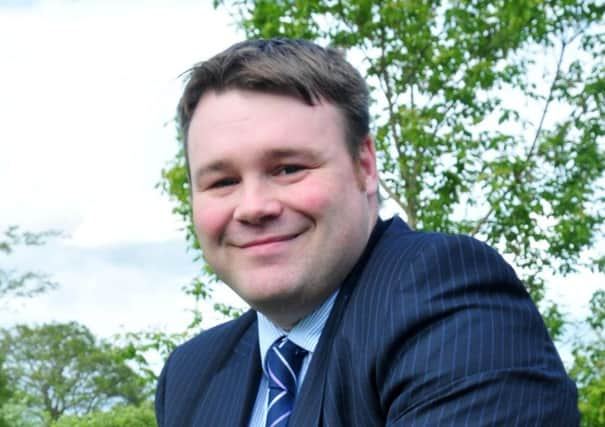Gareth Dyer's rugby column


Who spends what, who earns what, does club A do things above board, does club B have a benefactor and so on.
Its focus almost overtakes the action taking place on the pitch at times.
Advertisement
Hide AdAdvertisement
Hide AdI have to say it is also one of the reasons I decided to step away from day-to-day involvement in the game.
It became wearying trying to find ways to compete and deliver a strong national league club in a northern outpost, whilst there was a lack of financial constraints placed on clubs to regulate their behaviour.
Having had the debacle of early professionalism with clubs going bust through financial mis-management, we did have a period afterwards where it looked like things might have settled down, with clubs reassessing their place in the game and rediscovering their identities.
However, I believe we are into a dangerous new financial phase for the game at semi-professional level.
Advertisement
Hide AdAdvertisement
Hide AdBut there may just be action coming that will prevent the inevitable hangover that will no doubt follow the current level of excess.
According to a leaked report published in The Rugby Paper, a Community Game Board working committee has recommended that spending constraints be imposed on clubs outside of the professional game for the first time.
For that committee – which included luminaries such as Brian Moore, the former England international – suggested that a tiered salary cap be brought into place for clubs operating below the professional game.
They suggest a salary cap of £150,000 a season be brought in at Level 3, £100,000 at Level 4 and £50,000 at Level 5. Clubs at Level 6 or below would become fully amateur, according to this report.
Advertisement
Hide AdAdvertisement
Hide AdClubs breaking the rules would then be subject to sanctions that could include the loss of RFU travel allowances and access to grants and interest-free development loans.
Whilst these level of sanctions would be a start, they would need to be significantly enhanced if the immediate reaction of some clubs to the proposals were anything to go by.
A number of clubs have signalled their intent to create uproar if such constraints are brought into place and that they will effectively ignore any such attempts to impose a cap.
The usual trotting out of restraining ambition is their gripe.
Advertisement
Hide AdAdvertisement
Hide AdUnfortunately, it is those clubs and their short sightedness and self-interest that has got us to this position in the first place.
I have previously written about the structure of league rugby in England and how the open pathway that is promotion and relegation is a curse.
Whilst the professional game receives central funding – millions of pounds per season to the Premiership clubs and £550k to the Championship clubs – the National League clubs receive only a contribution towards their travel costs per season.
Hence we have the situation where clubs at Level 3 must try and build a playing budget that allows them to make the step up to full-time rugby whilst still part of a semi-professional game.
Advertisement
Hide AdAdvertisement
Hide AdOf course that is if they actually do want to make that step up in the first place.
And straight away you have a problem between those who do and those who either don’t or know that they can’t.
So what does the semi-professional financial landscape actually look like?
Some clubs in the National Leagues employ players on professional deals. This may only be a couple of players at some clubs but at others it runs into double figures.
Advertisement
Hide AdAdvertisement
Hide AdLet’s say a club has 12 full-time/employed players, each earning on average £17k for a season – not exactly life changing money but a realistic figure from my experience.
Straight away the bottom-line cost to that club is £204k.
Add in the cost of another 20-plus squad players who are part-time and earn appearance fees per game and this conservatively pushes the playing budget at that club towards the £300k-per-season mark.
Add in the costs of coaches, medical staff, transport, playing equipment, etc, and it’s clear that those clubs will be getting little change from circa £400k.
These sorts of budgets are not uncommon for clubs at the top of National League One (Level 3) who have one eye on making the championship. Whether anything is left over to actually develop their facilities, infrastructure, community programs, etc, is unknown and, to most, irrelevant.
Advertisement
Hide AdAdvertisement
Hide AdFrom there it is a sliding scale downwards all the way to those clubs who state they are “strictly” amateur and don’t pay their players anything to turn out for them.
Looking at the proposed cap for Level 4 which Hoppers operate at then I would be amazed if there are more than two clubs in National 2 North who could realistically spend up to the suggested limit.
And what is clear is that the description of the semi-professional game being a national competition is under threat, with fewer and fewer outpost clubs able to push onto the upper reaches of the professional game.
When the salary cap was introduced into the Premiership it was an attempt to prevent a situation whereby some clubs became an untouchable elite and ensured the competition remained competitive.
It is vital that this now takes place in the lower leagues.
If it doesn’t then even those clubs that have shown responsible financial management will be punished for their prudence and will not come again.